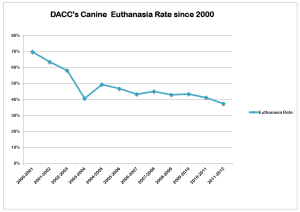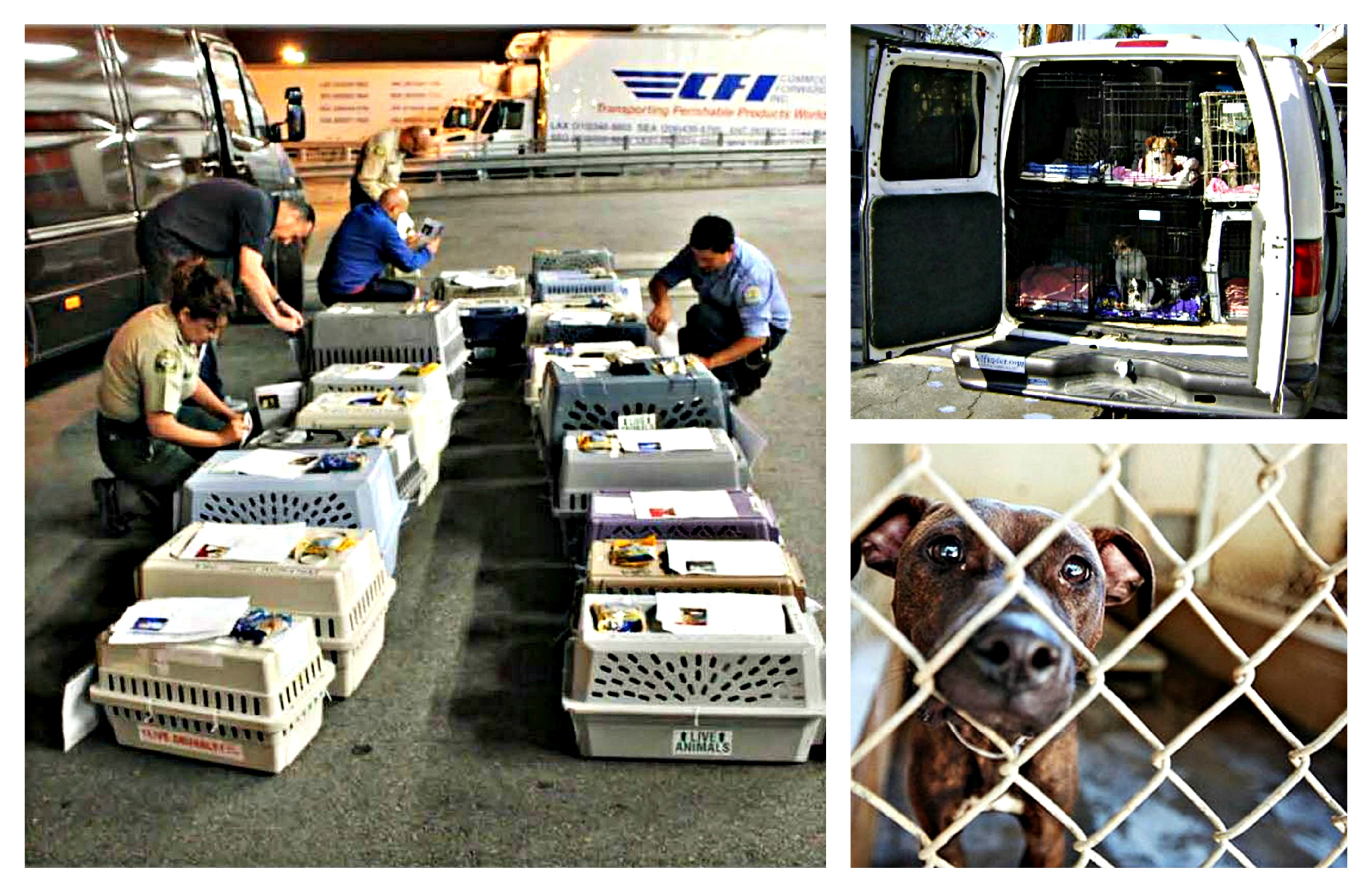The Beverly Hills Chihuahua is taking up residence in Brooklyn.
Shelters in Los Angeles County are euthanizing fewer and fewer dogs thanks to a variety of innovative practices, including what some might label “an Underground Railroad for canines.”
The LA County Department of Animal Care and Control (DACC) is responsible for a jurisdiction that covers both the unincorporated areas of the county—which amount to more than 65% of total county space, or 2,653.5 miles—as well as several contract cities. It is the largest animal control agency in the nation.
Unlike nonprofit and private organizations, the DACC is required to take in any animal surrendered by the public. The Department receives over 90,000 animals a year; about 42,000 of which are dogs. Of those 42,000, only 37.32% have to be put down. This figure is remarkable considering that just over ten years ago in 2001, the DACC was euthanizing almost 70% of its pets.
 Small dogs run rampant in LA County, and a majority of the dogs received are either Chihuahuas, terriers or some kind of mix thereof. According to Evelina Villa, Acting Public Information Officer for the Department, accessibility is low for small dogs in other states but the demand is high. She specifically cites New York as an example: a lot of people live in apartments and want little dogs to complement their lifestyle choices.
Small dogs run rampant in LA County, and a majority of the dogs received are either Chihuahuas, terriers or some kind of mix thereof. According to Evelina Villa, Acting Public Information Officer for the Department, accessibility is low for small dogs in other states but the demand is high. She specifically cites New York as an example: a lot of people live in apartments and want little dogs to complement their lifestyle choices.
The Department, in conjunction with the local nonprofit organization, the Best Friend Animal Society, came up with a working solution with the potential to benefit all involved.
In 2008, the two entities began targeting regions across the U.S. and preparing dogs up to 25 lbs. for transport either by plane or van. The Best Friend Animal Society then funded the transports and worked with the County to coordinate placement with the destination jurisdictions.
In total, the DACC and Best Friend Animal Society have exported over 7,800 dogs since the program’s inception in 2008.
Not only does this practice save thousands of canines, but it allows the DACC to directly target adopters who are outside of the Department’s sphere of influence. Because they are soliciting LA County citizens at a lower rate, local residents are less apathetic and more likely to adopt, according to Villa.
“We have been very pleased with the success of the dog transport programs over the past several years,” said Marcia Mayeda, Director of the DACC. “By sending our overabundance of small dogs to areas in which they are in short supply, we have reduced our euthanasia rate to the lowest it’s ever been. Clearly, creative partnerships like these have been a tremendous benefit for the animals as well as their new families.”
Villa attributes their success in lowering the euthanasia rates to several other factors as well.
The DACC is quite active in its community outreach. Each of the six County-run shelters hosts an offsite adoption center at least once a week, four times a month.
Villa states that these efforts are “geared towards community involvement.”
“People are afraid of shelters—they remind them of sadness—so we take the shelter to the community.” she states. “This benefits the dogs as well. They are as comfortable as they can get at these adoption events, since we hold them on the grass in parks or surrounded by animal lovers at Petco.”
Another innovative program is administered through the nonprofit group, Grooming Gives Hope. Dogs that have come into shelter in poor condition, with severe matting and underlying skin conditions, are treated by a team of professional dog groomers. The makeover allows dogs who were previously at high risk of not being adopted to stand a better chance.
Since the program’s inception in May of 2008, 5,428 dogs have been treated with a cost savings of over $185,000 to the department.
Another foundation called Dreams Come True funds any extraordinary medical service that cannot be treated in the normal course of medicine. Since 2006, the nonprofit has provided over 96 life-saving surgeries and saved the County over $93,000.
“We attribute this to the tireless work of our animal care team, both staff and volunteers,” said Mayeda. “It is an arduous task to simply manage the large numbers of animals entering our animal care centers every day from the community. But our team realizes the necessity to put on the match-making hat when the public visits to facilitate good, life-long adoptions. Frequent off-site adoption events, shelter pet transports, marketing and networking efforts by our volunteer team, and our more than 250 rescue partners who stand with us each and every day are just some of the reasons we are realizing increased adoptions and less euthanasia.”
In the SoCal area and looking for a new best friend? Check out the variety of pets up for adoption at the LA County DACC’s website.





